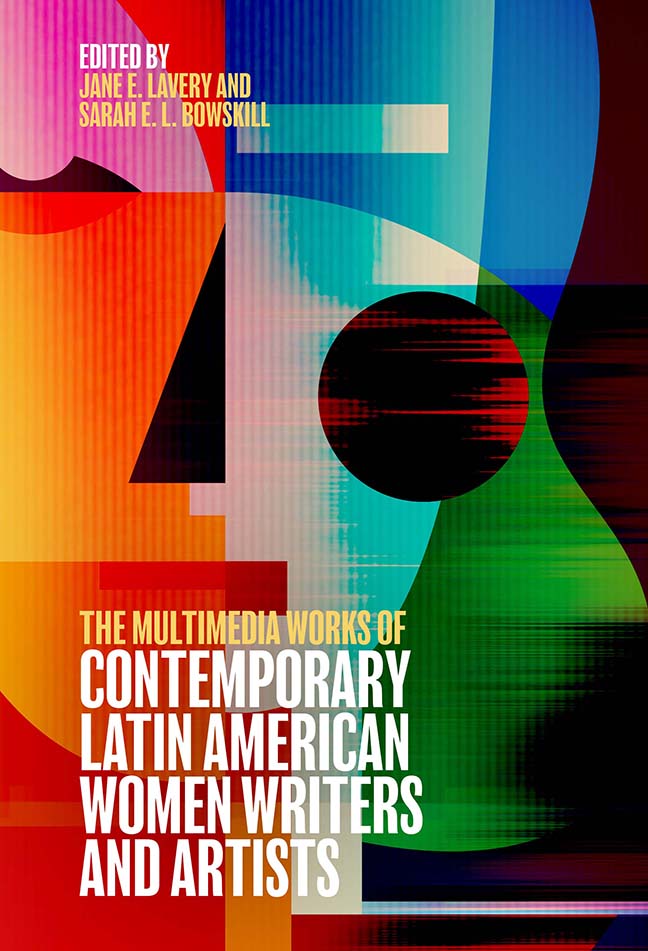Book contents
- Frontmatter
- Contents
- List of Illustrations
- List of Contributors
- Acknowledgments
- Introduction: A Crosscurrent of Contemporary Latin American Women Multimedia Writers and Artists
- 1 The Transliterary: The Novel and Other Multimedia Horizons Beyond (and Close to) the Textual
- 2 Commentary on Fe/males: Sieges of the Post Human (Transmedia Installation)
- 3 An Anthropophagic Ch’ixi Poetics
- 4 My Relationship with Artistic Creation Began with Words
- 5 Imagetext
- 6 Voices/Bodies
- 7 Redefining Meaning: The Interweaving of the Visual and Poetic
- 8 The Territory Is Home
- 9 Reflections on a Multimedia Practice
- 10 Digital Weaving
- 11 Eli Neira, Regina José Galindo, and Ana Clavel: “Polluting” Corporealities and Intermedial/Transliterary Crossings
- 12 The Digital Condition: Subjectivity and Aesthetics in “Fe/males” by Eugenia Prado Bassi
- 13 The Transmedia, Post-Medium, Postnational, and Nomadic Projects of Pilar Acevedo, Rocío Cerón, and Mónica Nepote
- 14 The Art of the Hack: Poets Carla Faesler and Mónica Nepote and Booktuber Fátima Orozco
- 15 The Places of Pain: Intermedial Mode and Meaning in Via Corporis by Pura López Colomé and Geografía del dolor by Mónica González
- 16 Words, Memory, and Space in Intermedial Works by Gabriela Golder and Mariela Yeregui
- 17 Fungibility and the Intermedial Poem: Ana María Uribe, Belén Gache, and Karen Villeda
- 18 Hypertext and Biculturality in Two Autobiographical Hypermedia Works by Latina Artists Lucia Grossberger Morales and Jacalyn Lopez Garcia
- 19 Dialogues Across Media: The Creation of (New?) Hybrid Genres by Belén Gache and Marina Zerbarini
- Bibliography
- Index
- Tamesis
2 - Commentary on Fe/males: Sieges of the Post Human (Transmedia Installation)
Published online by Cambridge University Press: 17 December 2023
- Frontmatter
- Contents
- List of Illustrations
- List of Contributors
- Acknowledgments
- Introduction: A Crosscurrent of Contemporary Latin American Women Multimedia Writers and Artists
- 1 The Transliterary: The Novel and Other Multimedia Horizons Beyond (and Close to) the Textual
- 2 Commentary on Fe/males: Sieges of the Post Human (Transmedia Installation)
- 3 An Anthropophagic Ch’ixi Poetics
- 4 My Relationship with Artistic Creation Began with Words
- 5 Imagetext
- 6 Voices/Bodies
- 7 Redefining Meaning: The Interweaving of the Visual and Poetic
- 8 The Territory Is Home
- 9 Reflections on a Multimedia Practice
- 10 Digital Weaving
- 11 Eli Neira, Regina José Galindo, and Ana Clavel: “Polluting” Corporealities and Intermedial/Transliterary Crossings
- 12 The Digital Condition: Subjectivity and Aesthetics in “Fe/males” by Eugenia Prado Bassi
- 13 The Transmedia, Post-Medium, Postnational, and Nomadic Projects of Pilar Acevedo, Rocío Cerón, and Mónica Nepote
- 14 The Art of the Hack: Poets Carla Faesler and Mónica Nepote and Booktuber Fátima Orozco
- 15 The Places of Pain: Intermedial Mode and Meaning in Via Corporis by Pura López Colomé and Geografía del dolor by Mónica González
- 16 Words, Memory, and Space in Intermedial Works by Gabriela Golder and Mariela Yeregui
- 17 Fungibility and the Intermedial Poem: Ana María Uribe, Belén Gache, and Karen Villeda
- 18 Hypertext and Biculturality in Two Autobiographical Hypermedia Works by Latina Artists Lucia Grossberger Morales and Jacalyn Lopez Garcia
- 19 Dialogues Across Media: The Creation of (New?) Hybrid Genres by Belén Gache and Marina Zerbarini
- Bibliography
- Index
- Tamesis
Summary
When I was 24 years old, I logged into a computer for the first time. From that moment I knew that I would never leave it. The key idea of this project was born from a personal experience that led to the writing of a text in a process that started four years before the launch of the work. Fe/males: Sieges of the Post Human, a transmedia installation, produced and presented by the Integrated Arts Collective, CAIN, was shown for the first time in the Galpón Víctor Jara, an arts center in Santiago de Chile. It had twelve performances, each of which lasted one hour and five minutes, between January and February 2004.
This project emerged from conversations with the musician John Streeter Ralph, about the central idea of the text: the interactions between bodies and machines and how those machines fit in with our bodies in order to radically change our lives. We thought of a transmedia installation to develop this global project which would involve several disciplines in the arts. A raw exposition saturated with a new humanity, the project proposed putting texts at the service of other disciplines: performance, audiovisual images, music, sound, lighting, screens in combination with diverse technologies that would enable us to bring more enigmatic and experimental texts to the public. We invited Cecilia Godoy, an actress and ballerina; Marcelo Vega, an audiovisual creator; Antonio Zurita to be in charge of machines and technology and the rest of the equipment.
This is theater/novel. The text passes through the body of the actress, who memorizes, reformulates, and recreates it, incorporating her own knowledge and images. To the body are added words and audiovisual images which are shown continuously during the whole show, projected on to two screens facing one another on opposite sides of the stage.
The work began with a piece of choreography by the actress which took place under an enormous sheet of corrugated, transparent plastic that covers the whole stage area. Two spot lights above followed her movements at the same time as a video was projected on two screens located on opposite sides of the stage. “I hate my father. My father. Love does not exist. I hate those messages that are burned into the memory. Love no. My father no, nor my mother”; the video included images of fragments of bodies and embryos floating in water.
- Type
- Chapter
- Information
- Publisher: Boydell & BrewerPrint publication year: 2023

